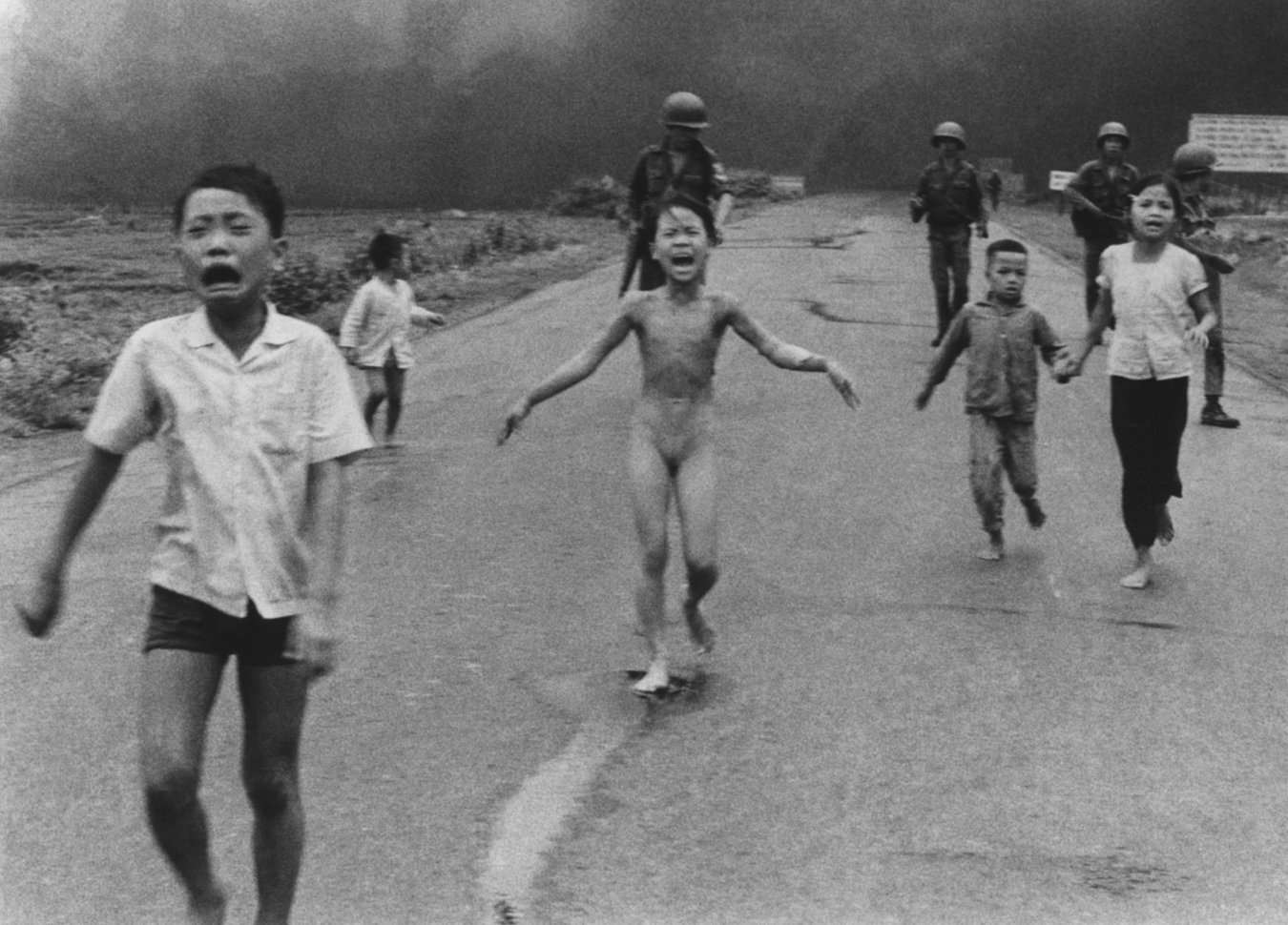3. Children Fleeing from a Napalm Attack in South Vietnam
Nick Ut, Photograph (June 8, 1972)
Although the cold war dominated the European landscape during the 1950s and 1960s, it also loomed large in Asia. Responding to years of resistance against French colonial rule led by the founder of the Indochinese Communist Party, Ho Chi Minh (1890–1969), the Geneva Convention divided Vietnam into North and South in 1954. Ho Chi Minh and his followers were ordered to retreat to the North. U.S. leaders feared that the communist presence there would spread elsewhere in the region, and gradually their commitment to a non-Communist South Vietnam escalated to all-out war. By 1966, the United States had more than a half million soldiers in South Vietnam. One of the most compelling images of the Vietnam War is that of children running down a dusty road, screaming in terror and pain after a napalm attack on their village. The photograph, taken by Associated Press photographer Nick Ut, appeared on the front pages of newspapers around the world and helped turn public opinion against the war. Although South Vietnamese aircraft executed the attack, it had been ordered by the U.S. Army—a fact that shocked much of the American public. In the years following its publication, the North Vietnamese government used the photograph as evidence of American atrocities.

DISCUSSION QUESTIONS
- Why do you think this image had such a powerful impact on the public at the time?
Question
Why do you think this image had such a powerful impact on the public at the time?
accept_blank_answers: true
points: 10Why do you think this image had such a powerful impact on the public at the time? - What does the image of the young girl in the center of the photograph, with her clothes having been burned off and her skin on fire, reveal about the technology of war and its human costs?
Question
What does the image of the young girl in the center of the photograph, with her clothes having been burned off and her skin on fire, reveal about the technology of war and its human costs?
accept_blank_answers: true
points: 10What does the image of the young girl in the center of the photograph, with her clothes having been burned off and her skin on fire, reveal about the technology of war and its human costs? - How might the photograph’s effect on U.S. public opinion have been different had the perpetrators of the napalm attack been the North Vietnamese army rather than the South Vietnamese and the Americans?
Question
How might the photograph’s effect on U.S. public opinion have been different had the perpetrators of the napalm attack been the North Vietnamese army rather than the South Vietnamese and the Americans?
accept_blank_answers: true
points: 10How might the photograph’s effect on U.S. public opinion have been different had the perpetrators of the napalm attack been the North Vietnamese army rather than the South Vietnamese and the Americans? - What do you think the political impact of this photograph was in North Vietnam after its publication?
Question
What do you think the political impact of this photograph was in North Vietnam after its publication?
accept_blank_answers: true
points: 10What do you think the political impact of this photograph was in North Vietnam after its publication?